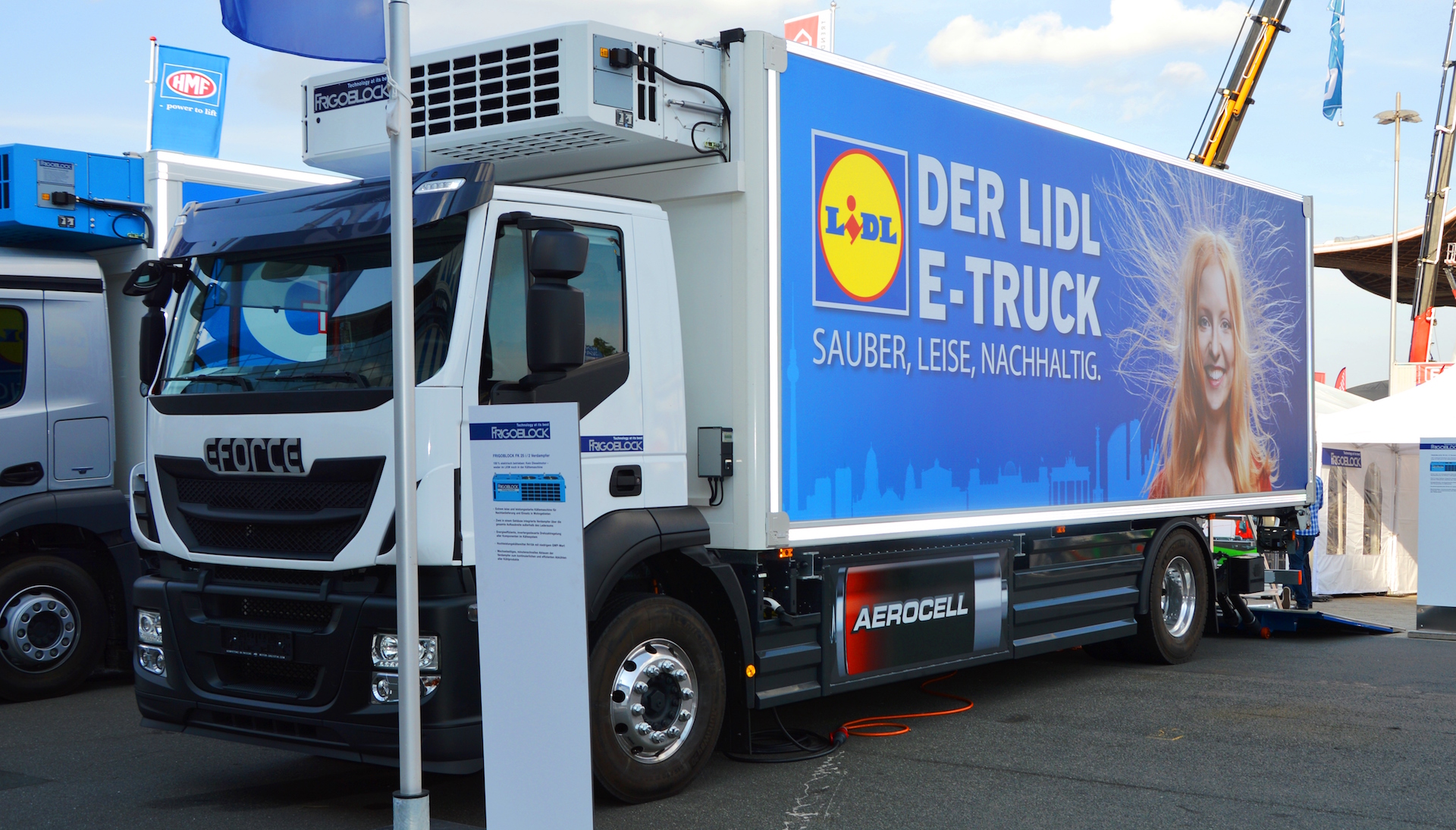As the EU puts together a mid-century climate strategy, Carlos Calvo Ambel explains how the European Commission’s choice of modelling could be severely underestimating what emission cuts can be gained from the transport sector.

Electric trucks are not included in the Commission’s models, despite the fact that some have already come onto the market come onto the market (Photo by Spielvogel, CC0 1.0)
Three years ago, EU climate Commissioner Miguel Arias Cañete was delighted with the outcome of the Paris Agreement. Years of negotiations had finally paid off. Now the Commission is finally about to undertake work that will determine what Europe needs to do to meet these goals.
By December, the Commission needs to prepare a strategy outlining options for the future. Crystal balls are unreliable so instead the Commission will be relying on modelling. This may sound like a technicality but it’s actually very important as the assumptions and the working of the Commission’s model will be central to the whole decarbonisation strategy.
Unfortunately the Commission’s chosen model, PRIMES, is a black box veiled in secrecy. And here, the devil is in the detail.
For the last couple of years we have all been running around Brussels trying to get a decent 2030 policy in place. We now have 2030 targets but are still battling over how to achieve these.
For example, as part of discussions on CO2 standards for cars, vans and trucks. But in the climate world, 2030 is literally just around the corner. 2050 is the next step.
No econometric model is perfect. In the case of PRIMES, it is used to estimate what is expected to happen in the absence of policy, and the most cost-effective way to achieve specific goals.
Choices need to be made on what to input and, by and large, these are made off the back of extensive research.
But given the importance of this exercise that will shape European economic policy for decades, we cannot afford to repeat the mistakes made in previous modelling exercises.
Transport & Environment has analysed the details of how transport is dealt with in PRIMES and we did not like what we found.
PRIMES is a conservative model that is unable to envision disruptive changes. Transport has the potential to reach zero emissions by mid-century but the Commission repeatedly under-evaluated this in previous modelling and attributed, for example, two times more emission reductions for buildings than transport in the 2030 strategy.
As the model finds what are, theoretically, the most cost-effective options, transport is not expected to reduce emissions much because it seems too expensive. There has always been reduction in transport that are cost effective.
The issue here is that the model should reflect the fact that potential cost-effectiveness in transport has considerably improved compared to the past, and it should allow for the sector to reach zero emissions by 2050.
In another example, PRIMES was used in the 2018 heavy-duty vehicle CO2 emission standard proposal, but despite some electric trucks already being on the road with many more planned and production lines being built as we speak, PRIMES does not foresee a single battery electric truck coming to market by 2030, and the electric truck’s potential impacts have to be calculated outside the model.
These are just two obvious examples. But the list of what PRIMES misses isn’t short: its electric vehicle battery prices were insanely high, with values for 2030 and 2050 above current market values.
It also suggests using fossil gas as a way to bring emissions down in ships or trucks, when by definition a fossil fuel cannot decarbonise; it penalises electric vehicles, as range would discourage buyers, when in reality ranges of above 500 km are around the corner.
Moreover, it does not consider the sustainability constraints on biofuel production; it expects surprising efficiency gains in aviation… It went as far as not even considering transport-specific technologies during a stakeholder consultation on technology cost assumptions.
However, our main concern is its opaqueness. Our analysis of PRIMES required plenty of desk work, looking into hundreds of pages from many different sources and trying to guess what is included.
When we don’t know the details of what goes in, it is impossible to ensure that what comes out is a good reflection of a sustainable future transport sector.
We don’t ask the Commission to predict how people and goods will move around the continent in 30 years time.
But we do ask them to consider all existing and potential decarbonisation options in the sector. Include the wrong assumptions and the challenge will look both unbearable and unaffordable.
This will mislead many to once again postpone major changes in the sector that is the largest source of greenhouse gas emissions on the continent.
Better the devil you know than the devil you don’t. Without the details, the 2050 strategy will be the latter, and an opportunity to clean up transport will have been lost. Europe should lead again on renewable energy, smart solutions and clean transport technologies.
This article has been republished from Euractiv.
Carlos Calvo Ambel is climate and analysis manager at Transport & Environment.